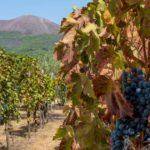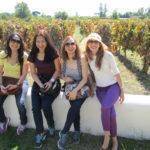Praiano and Vettica are ancient villages like all others on the Coast, and are situated halfway between Positano and Amalfi. The origins of these two villages are unfortunately unknown to us because of the few documents found so far. Praiano, Antica Plagianum, facing east gives you the opportunity to enjoy the sun and moonrise, whilst Vettica Maggiore faces west and from there you can admire wonderful sunsets behind the “Faraglioni” of Capri . Praiano has always been a fishing village and until few years ago fishing was the main profession. The old village was situated by the sea, but due to the saracen’s invasion, pestilences, and other natural calamities, they were obliged to move higher up in the mountains for safety reasons. During the “Angioino” and Preroyal periods many fortresses were built along the sea. Many of these are still in good condition and can be seen along our marvellous coast. They also built a lot of houses with Mediterranean style roofs, looking like eagles nests lying among the rocks and terraced gardens with dry built walls made of local stones. The villagers also took up farming and grew products typical of the region such as citrus fruits, potatoes, tomatoes, grapes, barley. The council crest of Praiano includes oranges in it’s design , signifying the importance of agriculture. In the “Angioino” time, Praiano was bestowed the title of Universitas, an honour only few villages received. With that title, Praiano was able to become more independent. Still its financial relationship with Amalfi lasted until the 17th century. Silk and linen manufacturing along with the art of creating fishing nets provided other means of making a living. Men, apart from being good fishermen, used to fish and sell local corals to the factories of Torre del Greco . In 1924 a very bad landslide destroyed the Praia beach area. It was disastrous for the village as it was the location where most activities took place and where most local goods were traded. The “Cala della Gavitella”, located at Vettica di Praiano, another beach similar to the Praia , was also used as a trading place and for the storage of goods in the so called “magazzeni”. Spread around both villages 15 churches and chapels were built, with most being for private use. The two main churches were built after the Lepanto battle at the end of the 16th century: the Church of Saint Luca is located in “Praiano Alto” and Saint Gennaro in Vettica Maggiore.








